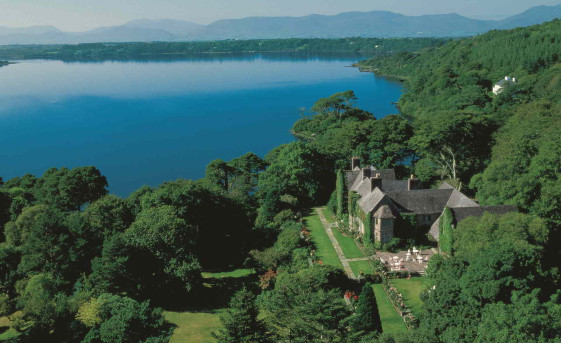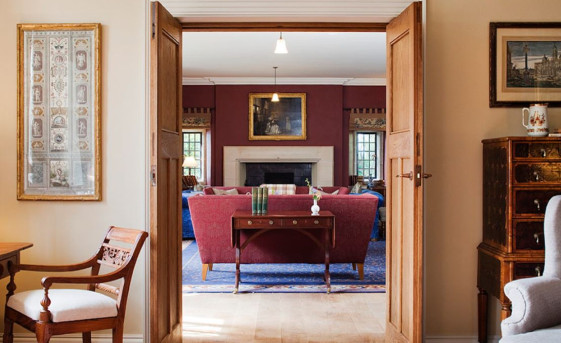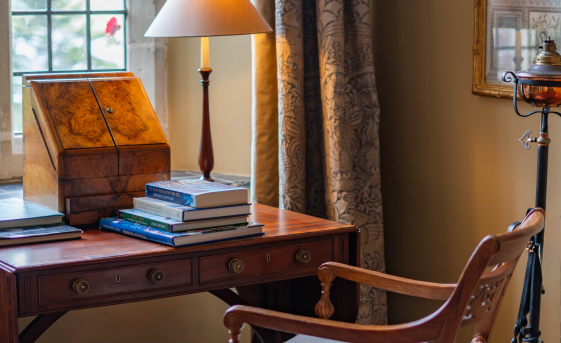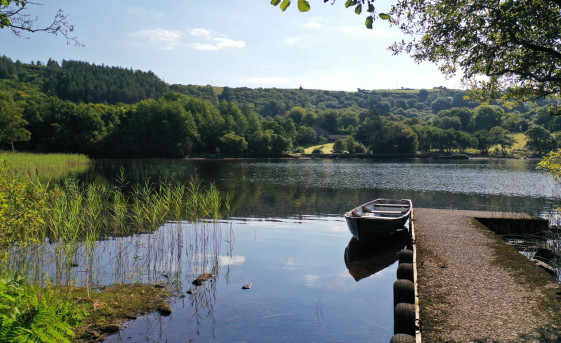
Originally built by Lady Gordon—a woman of titled Irish lineage whose ancestor, Bess Stokes, is said to haunt the grounds—the house stands on land she purchased in 1913. It was then that she began constructing what she called “The House of my Dreams.” She enlisted a contractor from Killorglin and employed local workmen, using only Irish materials, with the exception of the green-grey Westmorland roof slates. The house is long, low, and gabled, with casement windows set in stone mullions. “…And never,” said Lady Gordon, “...looked new,” perhaps due to the warm brown sandstone or the Kerry climate, which gave it the appearance of having already weathered centuries of rain and wind.
The house bears the style of an English Elizabethan manor, but when a visitor, pointing to the rounded cut-stone arch over the entrance, remarked, “A Romanesque door in an Elizabethan house,” Lady Gordon firmly defended her design. She explained that it was, above all, an Irish house—and since Ireland lacks a tradition of domestic architecture, her architect, Morley Horden (chosen more for his romantic appearance than for any particular talent), had drawn inspiration from the ruined churches. These ecclesiastical remnants, she said, are the only surviving traces in Kerry of a once-flourishing Gaelic civilization.


Lady Edith Gordon was a passionate gardener, traveler, and writer. She planted many trees and designed several garden features on the estate. Although most of these features have long since disappeared, the rock garden endures and still contains some of her original plantings. Lady Gordon documented her life and experiences in her memoir, The Winds of Time, in which she recounts how she began developing the garden. As far as we know, no significant planting took place after her time until the late 1970s, when a new phase began. At that point, many rare and unusual trees and shrubs were introduced to the estate, supplied by Hillier Nurseries in Hampshire. Since then, extensive scrub clearance has been undertaken to make way for ongoing planting, a process that continues to this day.
Ard na Sidhe, meaning "Hill of the Fairies", takes its name from the tree-covered knoll near the hotel. Nestled on a rocky slope, it faces westward, offering stunning views across the tranquil waters of Caragh Lake. The estate was purchased by the late Dr. Liebherr in 1958 and began welcoming guests two years later. In recent years, the house has been carefully restored by architects Howley Hayes, who lovingly returned it to its original splendour while preserving every ounce of its unique charm. Today, Ard na Sidhe Country House stands as a rare and distinguished example of an Arts and Crafts style residence.



Close

